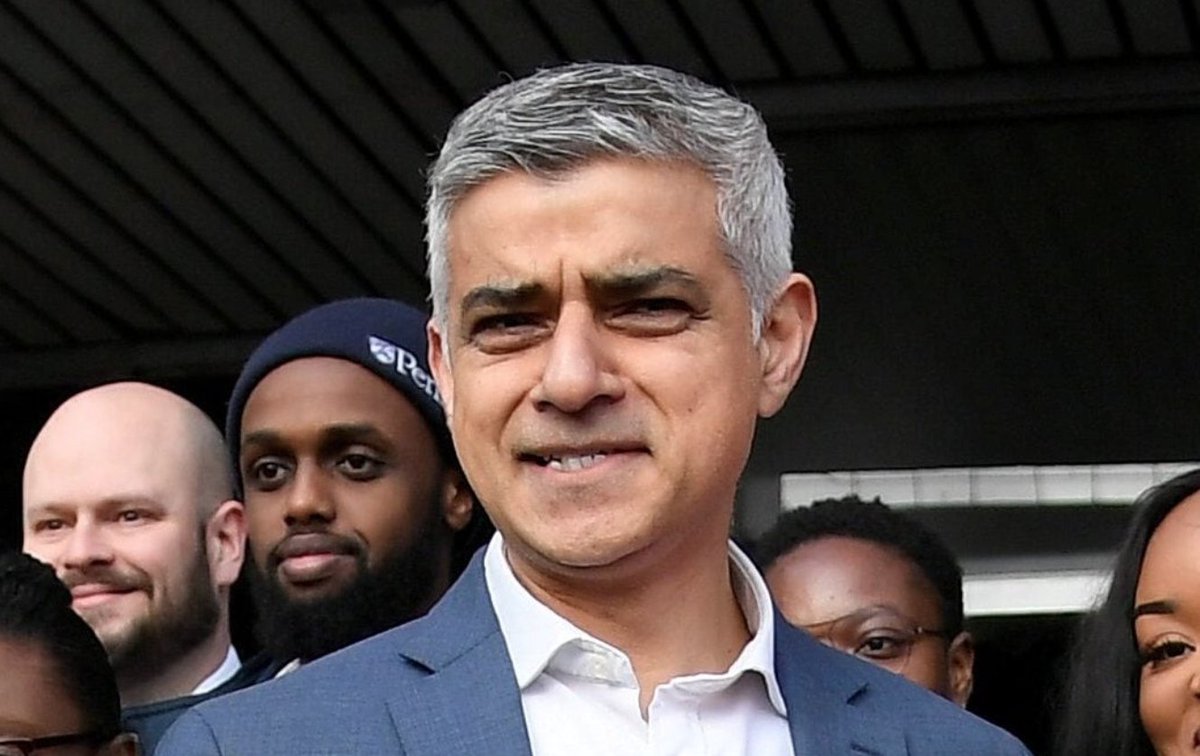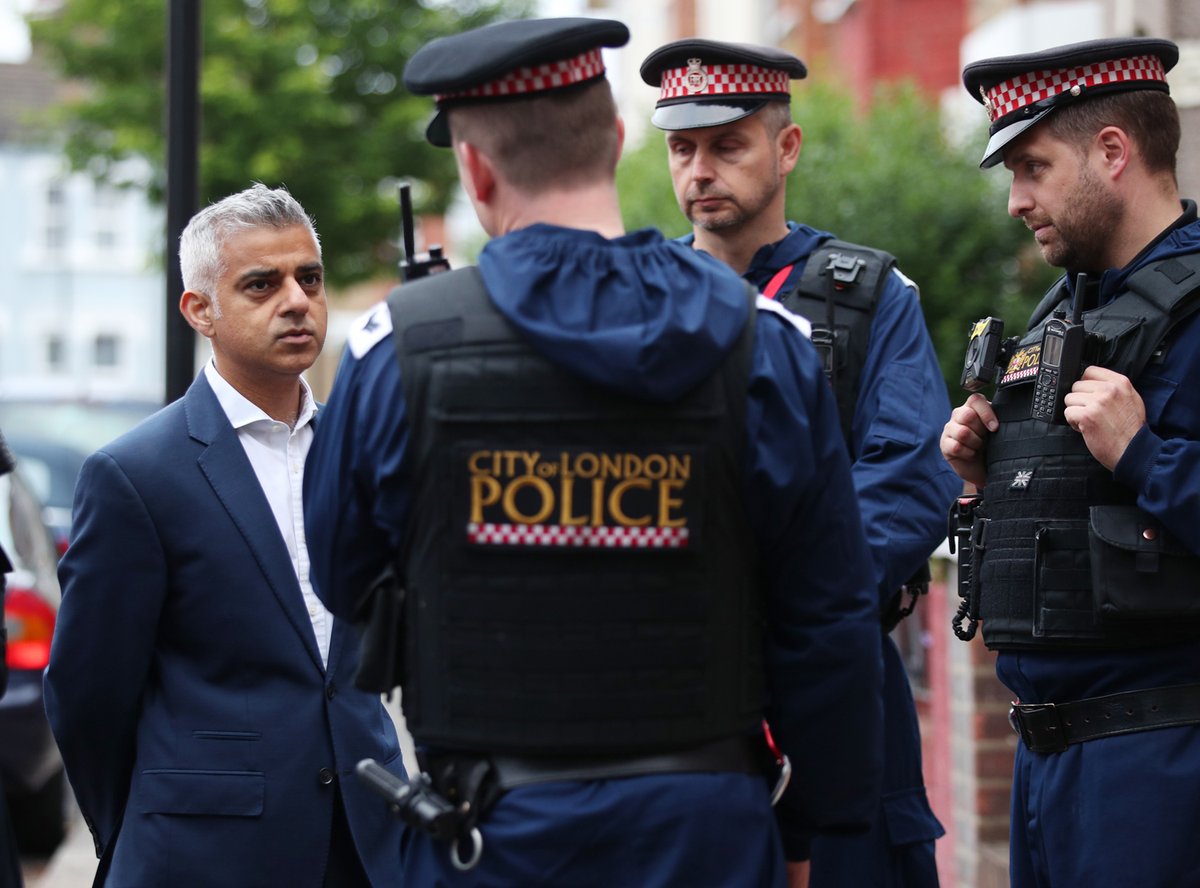2 days ago Sadiq Khan became Mayor of London on May 9, 2016 picking up 57 per cent of the vote in the election. Khan also gained notoriety after he engaged in a number of Twitter spats with the then US President Donald Trump. Khan initially froze some Transport for London (TfL) fares, in return for a £1.6billion bailout from the Government during the.
- 2 days ago One hundred business leaders today backed Mayor of London Sadiq Khan for re-election as the city's 'most pro-business mayor ever', saying he had been a.
- Sadiq Khan was an active participant in a Zoom family Seder held by Hampstead couple Noeleen and John Cohen. The London Mayor read several extracts from the Haggadah and spent more than an hour at.
Polling shows Sadiq Khan is set to secure a second term as London mayor on May 6. He is easily beating his Conservative rival, Shaun Bailey, who looks likely to suffer the worst defeat of a Tory candidate for the mayorality since the office was created more than 20 years ago. According to our latest poll with YouGov, Khan is currently leading Bailey by 47% to 26% on first preferences. In the final round, the current mayor would beat his rival by 66% to 34%.


The Mile End Institute (MEI) at Queen Mary University of London has been analysing the changing political landscape in the nation’s capital over the last four years through our regular polls. We’ve found that Khan’s political strengths are his perceived competence, the fact that his policy agenda resonates with the concerns of many Londoners, and the relative dominance of the Labour party in the capital.
In relation to performance in City Hall, the mayor has retained his net positive rating, with 45% saying he is doing well and 42% saying he is doing badly – although this has declined slightly since November, when 44% said he was doing well and 39% said badly. Indeed, voters believe that Khan’s handling of the pandemic has been reasonably effective, even though the mayor does not control the funding of the National Health Service; nor does he have legal powers through which to combat the spread of COVID-19.
Londoners have clear views about the priorities for the mayor if he is successfully elected for a second term. The poll results show that the top three concerns for public investment are the National Health Service (63%), housing (58%) and policing (42%).
When asked what would help to make London a more “liveable city”, respondents highlighted the top priorities as more affordable housing (56%), tackling anti-social behaviour (43%), improving air quality (30%), and building more homes for social rent (24%). Khan is emphasising his plan to support 170,000 green jobs and employment for young people but a higher priority for voters appears to be concerted action to tackle anti-social behaviour and crime on the city’s streets.
More controversial are plans for regulating car use in London. Low Traffic Neighbourhoods (LTNs) at the behest of London boroughs reduce the number of motor vehicles on residential streets. Over half of Londoners (52%) support them. However, when asked about expanding the congestion charge to cover Greater London, there was considerable disquiet, with 62% opposing an extension.
Delicate coalition
The incumbent mayor is advantaged by the Labour party’s strength in London. In the Greater London Authority elections that will take place alongside the mayoral race, 46% intend to vote Labour (down slightly from 50% in November 2020). Among 18- to 24-year-olds, Labour support rises to 67% and among black, Asian and multi-ethnic voters, Labour voting intention stands at 64%. Almost half (49%) the London middle-class say they support Labour.
But while Khan is on course for a solid victory, the challenge for him, and indeed the Labour party as a whole, is that they are relying on a relatively narrow electoral coalition to deliver that victory.
Khan is positioning himself as the “truly green candidate” in the race, solidifying his support among younger, liberal-leaning supporters. In doing so, however, there is a risk that he alienates other sources of traditional Labour support. For example, it is noticeable that voters over the age of 65, those living in the outer boroughs, and those who voted to leave the EU in the 2016 referendum are less likely to support Khan or Labour. Among the over-65s, Khan has a -29% rating for his performance as mayor. Middle-class Londoners give him a net favourability rating of 11%, whereas among working-class voters, the figure is -9%. Black, Asian and Multi-Ethnic voters (necessarily a diverse and complex grouping) generally rate him far more highly than white voters.
At his manifesto launch, Khan trumpeted his success in expanding cycling infrastructure during his tenure in City Hall. But older white voters appear less comfortable with the green agenda. Our survey found that voters over the age of 65 were overwhelmingly hostile to extending the congestion charge, with 80% saying they were against such a move. Opposition to Low Traffic Neighbourhoods was significantly greater amongst those who voted for Britain to leave the EU (51% were against; 36% were in favour), compared to those who voted remain (61% were in favour; 31% were against). Older voters wanted to see initiatives that tackle anti-social behaviour on London’s streets, while improving “quality of life”, such as cultivating more shops on local high streets.
The cultural cleavage between “progressive” and “conservative” voters, even within London, is firmly entrenched. We found that while 66% of Londoners over the age of 65 approve of a government plan to fly the union flag over government buildings, only 27% of young people (aged 18-24) do so. It will be a challenge for politicians, even those as adept as Khan, to address the divide in attitudes that now characterises London’s politics. Even so, the importance of cultural issues ought not to be overstated. Our survey shows that the core priorities in the capital that are under the mayor’s control remain jobs, housing and policing. It is on these issues that Khan will ultimately be judged in his second term.
Sadiq Khan’s “Housing Design Advocate” has denounced traditional architecture as “offensive” and said it “harks back to oppression”.
Sadiq Khan Twitter
Dinah Bornat made the remarks on social media in response to a post featuring a new house in the Georgian style shared by the Create Streets social enterprise, which often promotes traditional designs and street layouts.
“The fortress style/display of wealth resonates through time. I wonder is it starting to resonate just a little too much for a lot of us? Imperialism starting to look, well, offensive? Just a thought,” she declared in a now-deleted Twitter tirade preserved by the Guido Fawkes political blog, before clarifying that she was “talking about offence caused by colonialism. Which arguably goes beyond offence.”
She went on to complain that the alleged “replica approach” taken by the building’s designers “stifles cultural debate” and that defining it as beautiful was “politically troubling”.
“If beauty harks back to oppression we are on very dangerous ground,” she suggested.
Bornat’s remarks on the Graeco-Roman-style classical building left some social media users perplexed, with one asking her if she was referring to the oppression of the Roman Empire.
“I was actually talking about the Georgians and [British] colonialism,” she shot back. “But their style harks back to the Romans of course.”
“We all knew it wouldn’t stop at statues,” groaned Save Our Statues campaigner Robert Poll.
Vast majority of public would regard this 1929 modernist vision for Regent St with utter horror & yet it's stated aims similar to so many schemes still being built today: 'to let in as much light and give as much space as possible' via @Londonisthttps://t.co/ixMBBxxmIEpic.twitter.com/Jzbvolocya
— createstreets (@createstreets) December 10, 2017
Georgian architecture found a defender against Mayor Khan’s adviser in the form of former Country Life editor and history of architecture graduate Clive Aslet, who denounced her remarks as “part of the statue-toppling agenda that tars the country houses of the National Trust as products of an economy which condoned slavery.”

Sadiq Khan's Daughter Ammarah Khan
“Modern architects never give up. Even though Georgian architecture, with its magnificent squares, handsome streets and well-proportioned, flexibly designed houses, is hugely popular with the public, the avant-garde of the profession hates it with a passion,” Aslet Lamented.
Sadiq Khan Wife
“This style of Greek religious buildings spread around the Mediterranean, was adopted by the Romans, exported through their Empire, preserved by Byzantium, revived in the Renaissance and adopted by British aristocrats, whose education consisted principally in the reading of Greek and Latin texts,” he explained.
“Why are they so attractive? Because of their orderliness, their approachable scale, and the satisfying rhythm of the repeating elements of doorcase and sash window,” he insisted, rejecting Mr Bornat’s characterisation of the style as “the architecture of oppression”.
Harvard University Architecture Historian: Notre-Dame Burning Down Is ‘Act of Liberation’ https://t.co/135hmyrfDz
— Breitbart London (@BreitbartLondon) April 17, 2019
Greater London Authority
Follow Jack Montgomery on Twitter:@JackBMontgomery
Sadiq Khan Emergency
Follow Breitbart London on Facebook:Breitbart London
